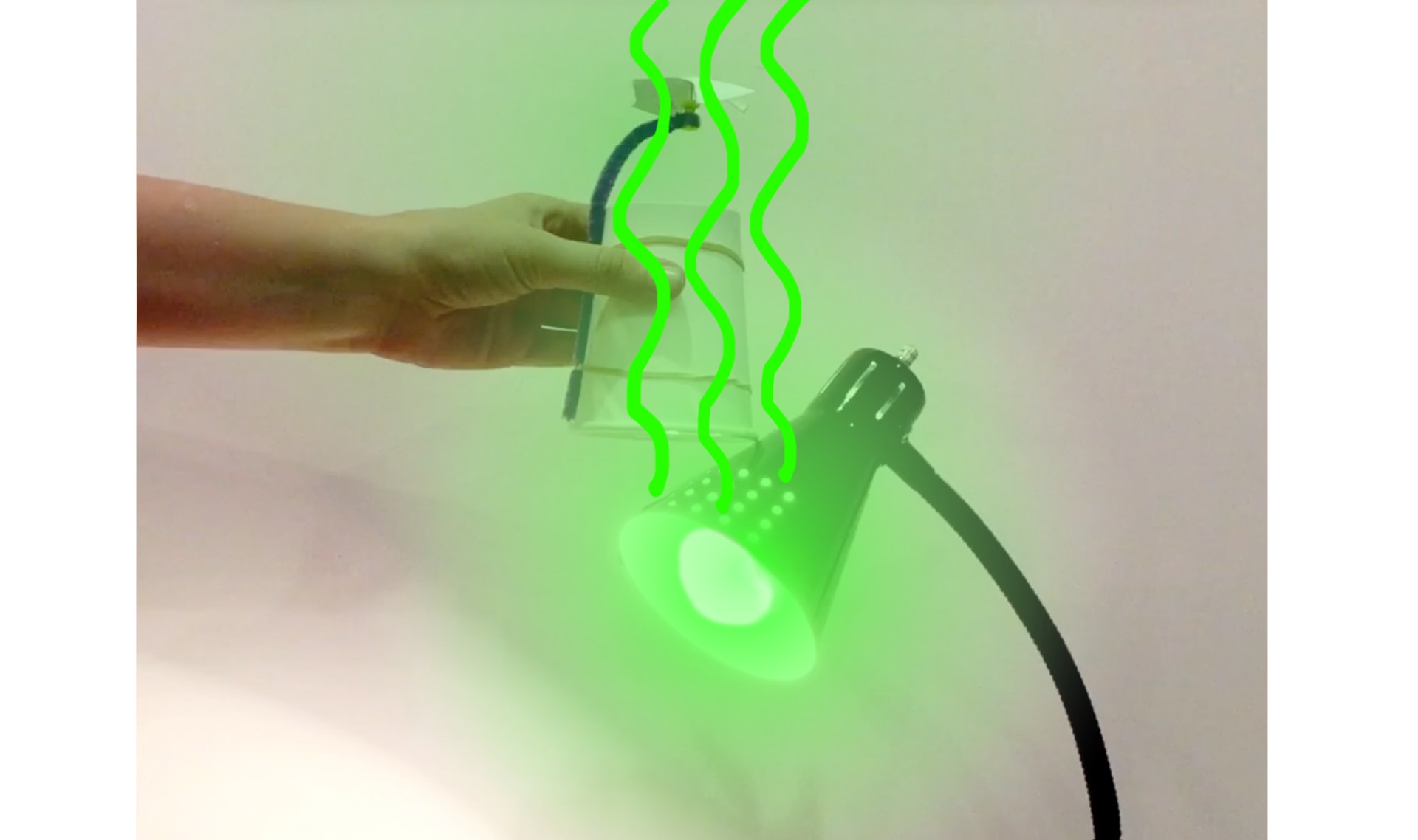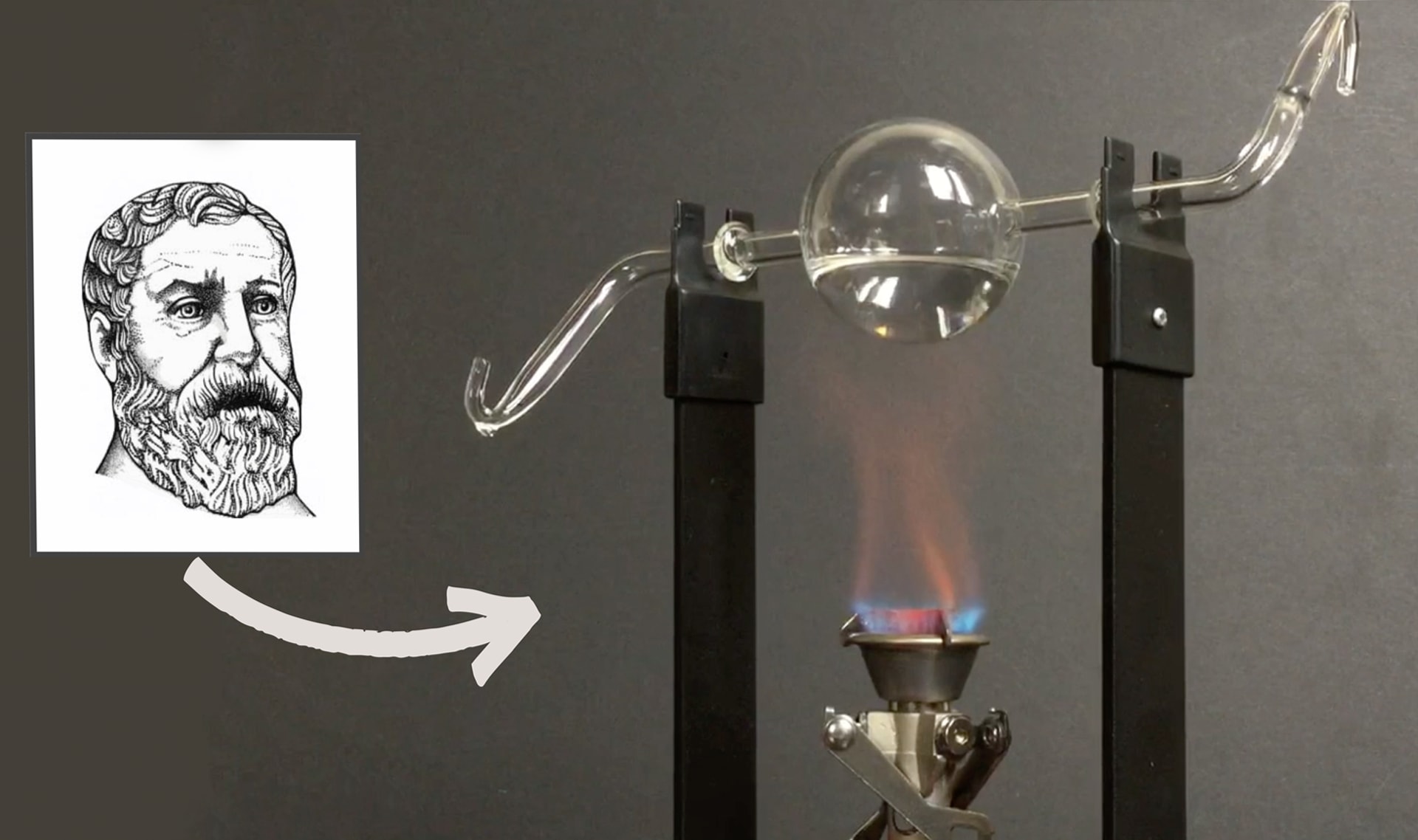
DISCUSS:
What’s one place you’d like to visit in your life? How would you travel there?

DISCUSS:
How could this device be useful?


















DISCUSS:
Moving air makes the spinner move. Does that give you any ideas about how heat could make the spinner move?
Teachers: If you are short on time, this is a good stopping point. You can experiment with heat on another day.
If you’re continuing right now, advance to the next slide.













In this lesson, students explore how heat is another form of energy that can make things go. In the activity, Heat Spinner, students first make a paper Heat Spinner and observe how air can create movement. Then, students use their Heat Spinners to experiment with a heat source (an incandescent bulb) and discover how heat energy can make the spinner move in different ways.
Preview activity|
Do Not Touch The Light Bulb! printout
You need 1 sign for each Heat Spinner Station with a lamp. |
Print 1 copy |
| Get to Know Your Spinner worksheet | 15 copies |
| Heat Spinners printout | Print 8 copies |
| Inventing a Heat Engine worksheet | 30 copies |
|
Desk Lamp
Used as a heat source for Experimental Stations.
Heat gel packs like these can also work, but they’ll only stay warm for 30 minutes.
|
Details
2 lamps
|
|
Rulers
|
30 rulers |
|
Scissors
|
30 pairs |
|
Paper Cups (8 oz)
|
15 cups |
|
Pencils w/ Erasers
|
15 pencils |
|
Pipe Cleaners
|
15 pipe cleaners |
|
Push Pins
|
15 pins |
|
Rubber Bands (#32)
|
30 bands |
|
Incandescent Bulbs (40W)
Not needed if you're using heat gel packs as a heat source.
|
Details
2 bulbs
|
In Part 1 of this activity, we recommend students work in pairs. In Part 2 of this activity, we recommend students work in groups of four. Homeschool students can work on their own, but will need someone to help with a few of the steps.
You need to set up at least two Experimental Stations with a heat source (a desk lamp with an incandescent bulb or a heated gel pack. You can heat the gel packs in the microwave, but they’ll only stay warm for about 30 minutes). For a class of 32 students, we recommend having two or more Experimental Stations. Four students will use each station at a time. When students are not using the Experimental Stations, they will be discussing ideas at their desks.
Part 1 (building a Heat Spinner) takes 15 to 20 minutes. Part 2 (experimenting with the Heat Spinners) takes another 15 to 20 minutes.
You may want to divide this lesson into two sessions, stopping after Part 1 and continuing with the Experimental Stations another day. If you plan to do the activity in two sessions, Part 2 begins here.
Push each push pin into the eraser of a pencil. This makes the push pins easier for students to handle.
Cut each “Get to Know Your Spinners” printout on the dotted line. Each student needs a half sheet. Cut each “Heat Spinners” printout on the dotted line. Each pair of students needs a half sheet. Cut the “Do Not Touch the Light Bulb!” printout on the dotted line to make two signs. You need one sign for each Experimental Station with a lamp.
To set up each station, place your heat source on a table away from drafts. If you are using a lamp as a heat source, put the “Do Not Touch the Light Bulb!” sign beside the lamp, plug the lamp in, and let it warm up for a few minutes before students experiment. If you’re using heat gel packs, heat them in the microwave right before class.
Watch this video and notice when the spinner moves and when it stops. The spinner moves because rising hot air pushes on it. That rising air has to come from somewhere. In the video, the spinner moves when there’s a gap between the heat source and the cup. Cool air moves through this gap and replaces the rising hot air. This is called the “chimney effect,” and it can make a big difference in how much the spinner moves. We like to use a lamp because students usually don’t set the cup directly on top of the heat source. If you use a gel pack or some other heat source, be aware that closing off the bottom of the cup completely can stop the circulation of air and therefore the movement of your spinner.
Thanks for your feedback! If you have a question or need help, please contact us. Please consider sharing your review:
Sorry the lesson didn’t go well. We read every single review in an effort to improve our Mysteries.
Thanks for letting us know. We’ll wait to ask you for feedback until after you've actually taught it.
Thanks for the feedback! We read every single review in an effort to improve our Mysteries.
Please follow these steps:
Locked
6:10

Why is the sky blue?
Locked
4:41

Why do we call them doughnuts?
Locked
5:16

Could a turtle live outside its shell?
Your membership is expired. The archive of past Mini Lessons is not included in your limited access.
View pricing